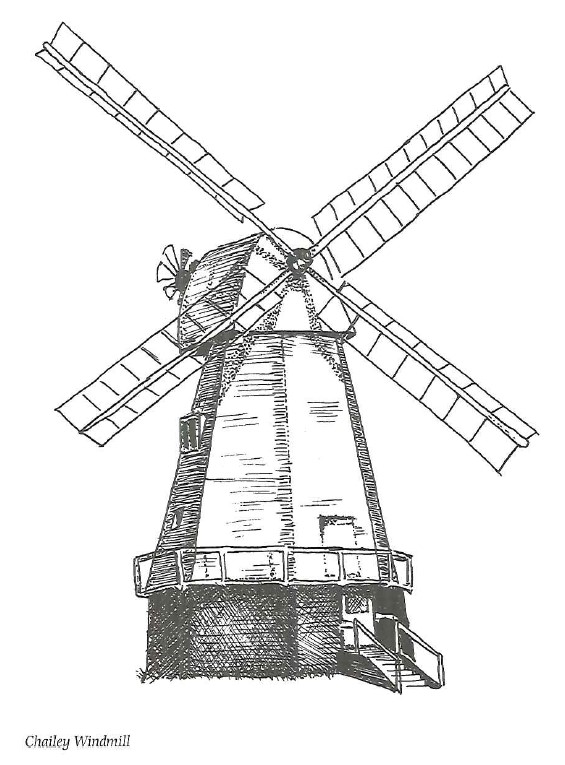It was in 1912 that Adrian Drewe, of Wadhurst Hall, celebrated his 21st birthday. To mark the occasion, festivities of all kinds were held on the great estate, which included fireworks by Messrs Brock and tea in a large tent. More than 500 people attended from the surrounding district and Adrian was presented with gifts befitting a young English gentleman who had come of age: a family portrait in oils, a 15hp Napier car, a Bechstein piano, fishing rods and a gun.
Five years later the parish magazine sadly recorded the death in action of Major Adrian Drewe.
Wadhurst’s little scholars had more than lessons to contend with at the village school. On one miserable, cold and snowy morning in March 1869, when only five children managed to turn up, so great was the smoke from the fire that the mistress put it out. Even when all was well with the fire, the room was Sometimes so cold that the children were ‘marched’ to keep them warm and, on one occasion, so intense was the cold that the clock stopped.
The last important bare-fisted prize fight in England took place here on 8 December 1863. The combatants were Tom King, an Englishman, and a giant American called Heenan, who had been known to wrestle and even attempt to throttle his opponents.
King was a stone lighter than Heenan’s 15st 7lbs, but youth and ability were on his side in a fight lasting a punishing 36 rounds and the Englishman eventually won the day.
A party of spectators had left London Bridge at 6.15 am in a special train of 30 carriages, which ‘drew up at a secluded spot short of Wadhurst station at 9.15 am,’ according to the Pugilistica reporter. The party then ‘toiled up a steep clayey hill for about a mile and a half’ to the venue of the contest at Sparrows Green. The brutality of the fight caused a public outcry and calls for reform. As a result public prize-fighting was made illegal.
Another upset party was the tenant of the land where the fight stakes were pitched. Old John Wallis came back from his holidays to find his meadow damaged, and his hedges and gates broken by the crowd.
Churchwardens in the old days had some strange duties. The Wadhurst accounts show that the parish was expected to pay for the control of vermin and the churchwarden was expected to dole out the cash (and join in). An extract from 1656-8 reads:
1656. Paid to Mr Barham of Butts for 3 dozen
of bullfinches
To him more for Jayes
And for Crowes. Rooks and Hedge Hogs
Paid myself more for 72 Bullfinches
Allowed to Longley for killing Badger
1658. Allowed for vermins’ Heads
The ruthless decimation of bullfinches is a puzzle, as is another local custom of hunting for squirrels on Good Friday.
It was the iron industry that laid the foundation for Wadhurst’s wealth as testified by the church’s collection of 30 iron floor slabs, the most in the county, and by the many fine houses in this mellow village.
Old habits die hard it seems. The iron industry had disappeared north to the coalfields at least a century before an attempt was made to revive it here in August 1857 after the arrival of the railway. Sussex ore was mined in Snape Wood and then transported by train to Staffordshire for smelting. It proved impractical and was abandoned in September 1858.
Oak trees, ‘The Sussex Weed’, fed the furnaces and also went from Whiligh in the parish to repair the roof of the Great Hall at
Westminster in 1922 and 1948, the Courthope family sending the best from their estate. It was one George Courthope who nearly three centuries earlier was knighted by Charles II, an honour slightly tarnished when he later sent a bill for £72 as “expenses’ for the knighthood.
As early as 1253 Wadhurst was granted a charter to hold a May fair on the feast of St Peter and St Paul, and it was still going strong when Mayfield schoolmaster Walter Gale noted in his diary on 29 May 1750: ‘I went to the fair at Wadhurst. Took a turn in the fair where on Sweethearts and maidenheads I laid out 2d.’
The charter also included a weekly market, which survived in the village as a livestock market until August 1982. The name lived on at Heathfield, however, where the Wadhurst Fat Stock Show was a popular feature.
A November day in 1956 is still recalled with sadness here. An RAF Meteor jet, being flown low over the village by a local young man, crashed into The Queen’s Head in the High Street, completely demolishing the ancient coaching inn, the nearby stores and a bungalow. The pilot, his navigator and four civilians were all killed.
Maurice Tate, the Sussex and England cricketer, became landlord at The Greyhound after his retirement from the game. He must have felt at home in a village where cricket has always had a strong following and been played since the 18th century. But football was here first; 13 Wadhurst men were fined for playing it in 1548 at a time when the amusements of the poorer classes were severely repressed as part of a general policy adopted by the young King Edward VI.
One man who knew more than most about the village’s more recent past was Charlie Bocking, who was born in 1898 and built up a huge collection of old photographs, documents and newspaper cuttings concerning Wadhurst which he presented to the parish. Charlie, grandson of the village schoolmaster who served from 1851 to 1890, lost many of his old school friends during the First World War. No fewer than 24 Wadhurst men, from the Royal Sussex Regiment, were killed on a single day at Festubert in May 1915.
